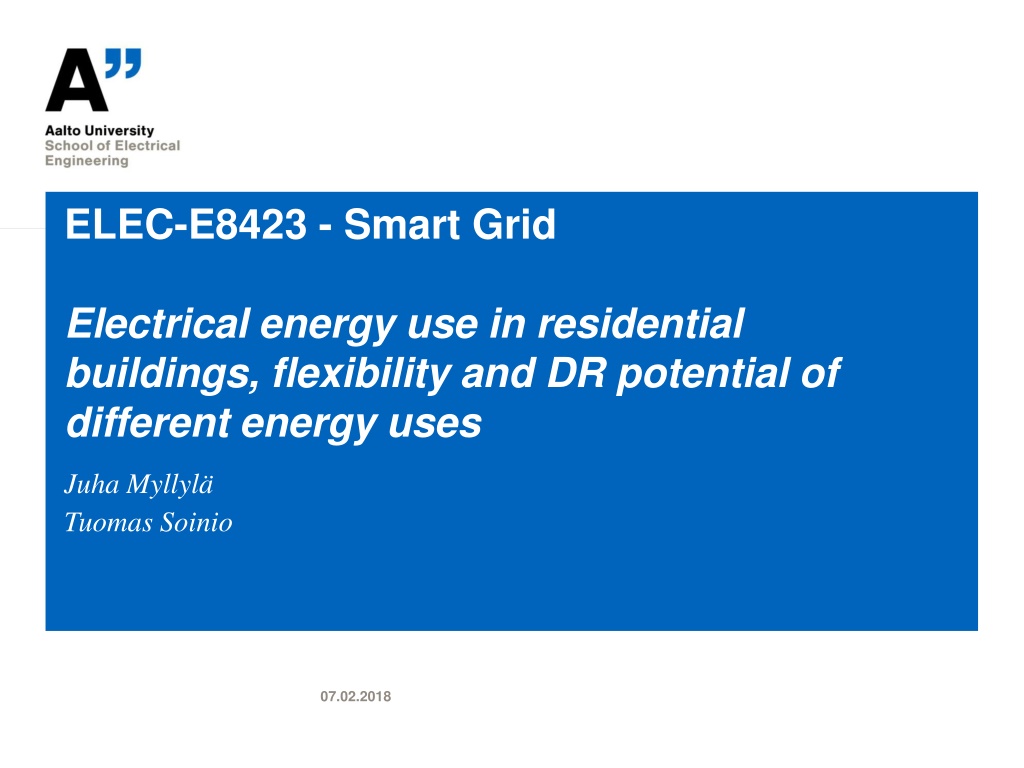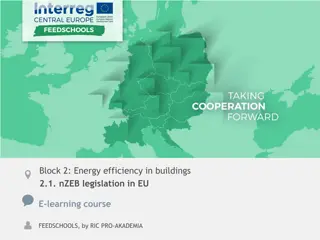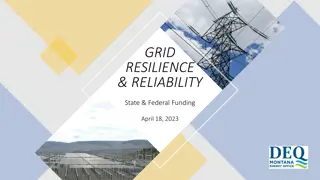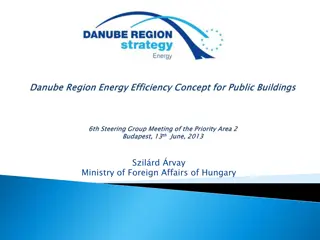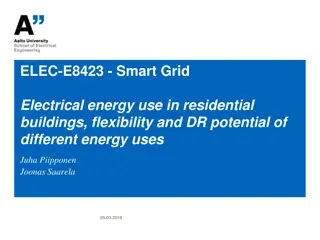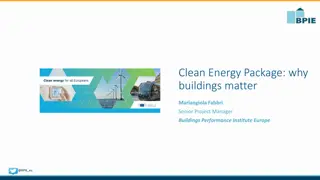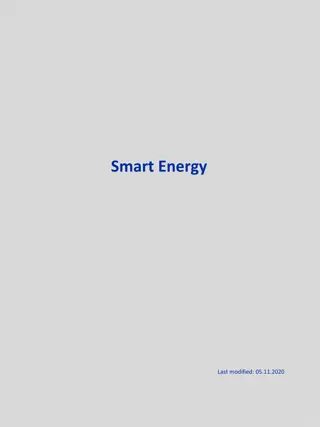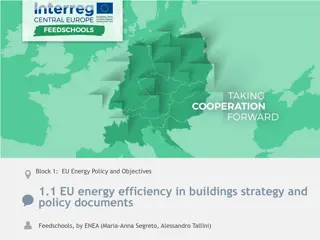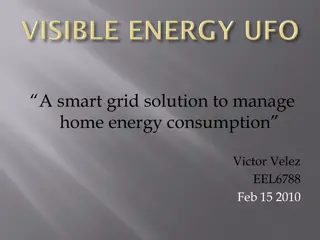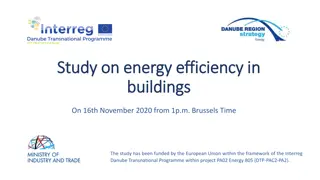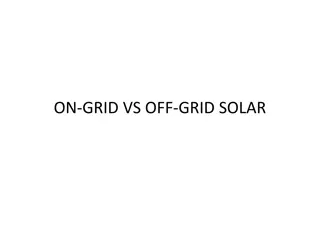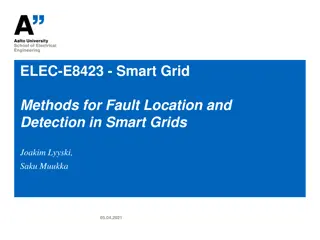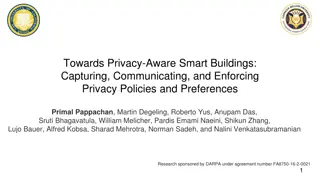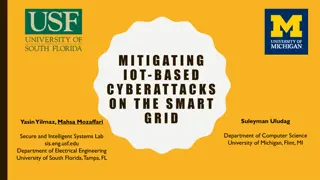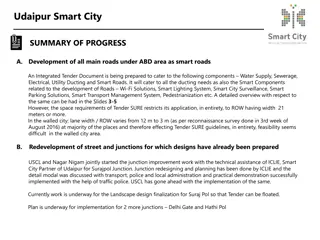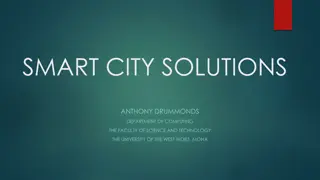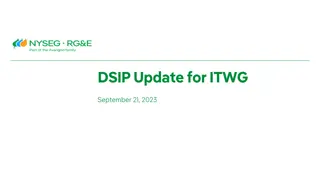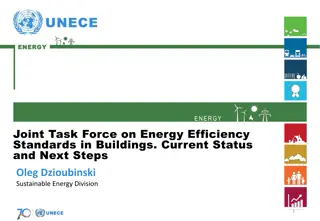Smart Grid Electrical Energy Use in Residential Buildings
In this study on smart grids, the focus is on the energy consumption of residential buildings and the potential for demand response. It discusses methods for flexible energy use, the importance of integrating IoT and AI technologies, and the categorization of energy loads based on their demand response potential. The responsibility of load control is analyzed, highlighting centralized and independent control options. The need for third-party aggregators for demand response in residential buildings is also emphasized, along with innovative solutions like network batteries.
Download Presentation

Please find below an Image/Link to download the presentation.
The content on the website is provided AS IS for your information and personal use only. It may not be sold, licensed, or shared on other websites without obtaining consent from the author. Download presentation by click this link. If you encounter any issues during the download, it is possible that the publisher has removed the file from their server.
E N D
Presentation Transcript
ELEC-E8423 - Smart Grid Electrical energy use in residential buildings, flexibility and DR potential of different energy uses Juha Myllyl Tuomas Soinio 07.02.2018
Introduction Energy consumption of typical residential buildings Demand response potential Possible methods for flexible energy use and their pros and cons IoT = Internet of things, DR = Demand response, AI= Artificial Intelligence, 07.02.2018 Page 2
Resindential building energy consumption House (120 m ) heated by electricity, electricity consumption 18 480 kWh/year Building energy consumption by energy source 2017 600400700 6% 600 9% 700 34% 680 1,000 22% 9,600 600 3,600 29% Electricity District heating Wood Heat pump Others Space heating Water heating Refrigerator and freezer Sauna Cooking and dishwasher Home electronics Washing machine and dryer HVAC-devices Car heating Other consumption 07.02.2018 Page 3
DR potential Goal is that electricity production must meet consumption, which can be done by shifting loads from peak hours to low- demand hours Loads can be divided into three groups: o No DR potential Lighting o Home electronics o o Small DR potential Washing machine o Dishwasher o Sauna o o Major DR potential Heating o Cooling o Air conditioning o 07.02.2018 Page 4
Responsibility of load control Centralized load control electricity company or distributor o Easier for the consumer o Load control is done blindly o For comfort reasons the load control periods must be kept moderate Independent load control consumer, based on electricity price o Various loads can be flexibly connect o Tenant knows what kind of conditions he/she wants so no major risks in comfort areas o Network operator can t know what kind of decisions the consumer does 07.02.2018 Page 5
Demand response in residential buildings Third party member (aggregator) is needed in order to sell extra energy to grid Batteries or other type of reserves inhouse aren t usable solution due taxing Selling spare energy should be financially tempting to individual house owners Pohjolan energia offers first in Finland a network battery solution 07.02.2018 Page 6
Current solutions Lot of companies offering software to control lighting and electronic devices Many advertises as being IoT but at moment none really fulfill standards to really be IoT solutions In Finland there is none offering possibility to control heating in scale of one room at a time 07.02.2018 Page 7
Challenges There are lot of standards to fulfill if software developer is aiming for residential building energy markets Cutting one building on and of the grid can cause problems in form of voltage spikes Information security is also concern when manual controlling is developing into wireless controlling 07.02.2018 Page 8
Conclusions Important to categorize which loads have potential for DR There are different pros and cons depending on who is responsible for the load control Heating has most potential but also big challenges to overcome Small scale local energy sources can help to answer for increasing DR at local energy markets 07.02.2018 Page 9
Source material used S hk n kysynt jouston toteuttaminen kotitalouksissa, Kauppinen Mikael, Diplomity 2016, Aalto- yliopisto s hk tekniikan korkeakoulu Towards the next generation of intelligent building: An assessment study of current automation and future IoT based systems with a proposal for transitional design, Georgios Lilis, Gilbert Conus, Nastaran Asadi, Maher Kayal, Published 2016 in sustainable cities and society https://www.stat.fi/tup/suoluk/suoluk_energia.html https://www.vattenfall.fi/energianeuvonta/sahkonkulutus/ Kiinteist n s hk nkulutus osana kysynt joustoa. Fidelix Automaatiov yl 2/2015: Automaatiolla tehokkuutta s hk n kysynt joustoon, https://docplayer.fi/34817880-Kiinteiston-sahkonkulutus- osana-kysyntajoustoa-fidelix-automaatiovayla-2-2015-automaatiolla-tehokkuutta-sahkon- kysyntajoustoon.html Experimental Implementation of Demand Response Service for Residential Buildings, Seung Ho Hong, Yi-Chang Li, Jung Hoon Park and Bing Zhao, 2014, Department of Electronics and System Engineering, Hanyang University 07.02.2018 Page 10
